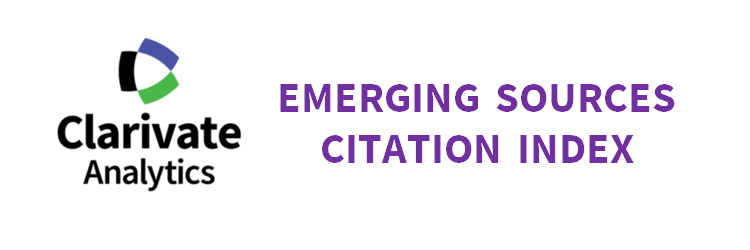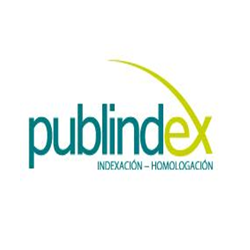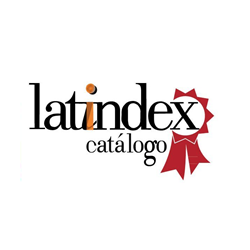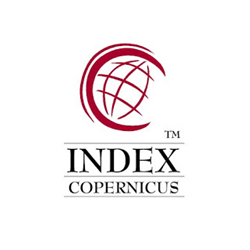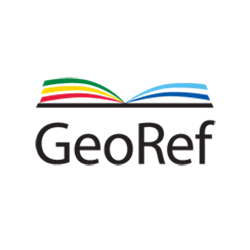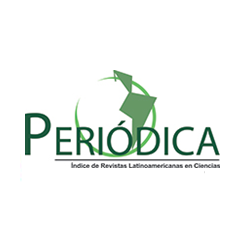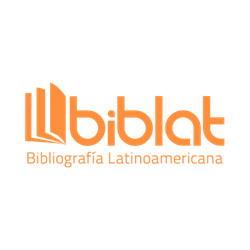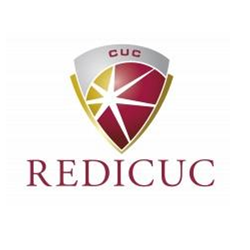Sedimentological study in the basin of La Floresta brook located in the municipality of Pailitas and Tamalameque, department of the Cesar, Colombia
DOI:
https://doi.org/10.17981/ingecuc.15.2.2019.08Keywords:
classification of soils, granulometry, Floresta brook, sedimentology, sediments, soilAbstract
Introduction: La Floresta brook is located between the municipalities of Pailitas and Tamalameque, has an extension of 13,500 hectares, where granulometric studies, humidity and sediment volume estimation contributed by the basin through the model EROSUP-U.
Objective: In order to quantify the sedimentological contribution and classify the soil type based on AASTHO and USC.
Methodology: 84 samples were collected, each 10mts and 15mts, following the methodology proposed by the Federal Electricity Commission of Mexico.
Results: The volumetric estimation, applying the universal equation of soil loss (EUPS), establishes that the sedimentological contribution of the brook is of 4,944,679,344.77 m3 / year; the soil was classified into four (4) groups (A-1-a, A-1-b, A-2-4, A-2-6), the most representative is A-1-a with 84.52% of the samples analyzed.
Conclusions: La Floresta brook has a wide granulometric variability of sediments, with a greater proportion of gravel, coarse sand and fine sand, with or without well-graduated fine material, with a predominance of gravels and a sedimentological contribution of 4,944,679,344.77 m3 / year.
Downloads
References
J. M. Smith, “Implicaciones ambientales de las tecnologías de energía renovable”. Ing. USBMed, vol 2, no. 2, pp. 10–16, Dic. 2011. Recuperado de: http://revistas.usb.edu.co/index.php/IngUSBmed/article/view/251/167
Universidad del Magdalena. “Evaluación de la capacidad de transporte de sedimentos y del potencial de material de arrastre y planteamiento de obras de rehabilitación de las corrientes hídricas superficiales Guaduas y Buturama, en el Departamento del Cesar, Santa Marta”, 2009. [Online
J. Mazenett. “Estudio de Hidrosedimentología en la Corriente de Aguas superficiales de la Quebrada Torcoroma”, Corpocesar, Cesar, Colombia, Inf. Tec., 2008.
D. C. Manco., A. Rudas., E. Rojas y Y. Mosocote, “Estudio sedimentológico en la cuenca de la quebrada San Pedro localizada en el municipio de Curumaní, departamento del Cesar, Colombia”, Ing. USBMed, vol 9, no. 2, pp. 19–26, Dic. 2018.
R. Goldsmith., R. F. Marvin & H. H, Mehnert, “Radiometric ages in the Santander Massif, Eastern Cordillera Colombian Andes”, US dept. Int., Washington, USA, U.S. Geol. Survey Prof. Paper 750-D, D44–D49, 1971.
L. Radelli, “Introducción al estudio de la Petrografía del Macizo de Garzón (Huila- Colombia)”, Geol. Col., vol. 3, pp. 17–46, Dic. 1962.
H. Bürgl & L. Radelli, “Nuevas localidades fosilíferas en la Cordillera Central de Colombia”, Geol. Col., no. 3, pp. 133–138, Dic. 1962.
A. Gansser, “The Guiana Shield (S. America). Geological observations”, Ecologae. Geol. Hel., vol. 47, pp. 77–112, 1954. http://doi.org/10.5169/seals-161828
A, Gansser, “Ein Beitrag zur Geologie und Petrographie der Sierra Nevada de Santa Marta (Kolumbien, Sudamerika)”, Min. Petro Mitt., band. 35, num. 2, pp. 209–279, 1955.
Ch. Tschanz., J. Buenaventura & A. Jimeno, “Ceology of the Sierra Nevada de Santa Marta area, Colombia”, Ingeominas, Bogotá, Colombia, Inf. Inter. No. 1829, 1969.
Ch. Tschanz, R. Marvin, J. Cruz, H. Mehnert & G. Cebula, “Geologic evolution of The Sierra Nevada de Santa Marta North Eastern Colombia”, Geol. Soc. Am. Bull, vol, 85, pp. 273–284, Feb. 1974. https://doi.org/10.1130/0016-7606(1974)85<273:GEOTSN>2.0.CO;2
M. A. Cuéllar, J. A. López, J. A Osorio y E. J. Carrillo, “Análisis estructural del segmento Bucaramanga del sistema de Fallas de Bucaramanga (sfb) entre los municipios de Pailitas y Curumaní, Cesar-Colombia”, Rev. Bol. Geol., vol. 34, no. 2, pp. 73–101, Dic. 2012. Disponible en http://revistas.uis.edu.co/index.php/revistaboletindegeologia/article/view/3113/3673
J. Clavijo. Mapa geológico generalizado de Norte de Santander. Escala 1:250.000. Mapa interno. Bucaramanga, Co: Ingeominas, 1994.
A. Forero, “Estratigrafía del Pre cretácico en el flanco occidental de la Serranía de Perijá”, Rev. Geol. Col., vol. 7, pp 7–77, 1972, https://doi.org/10.15446/gc
Organización de las Naciones Unidas para la agricultura y la alimentación, Guía para la descripción de suelos. Roma: FAO 2009. Disponible en http://www.fao.org/3/a-a0541s.pdf
Ministerio de Energía y Minas del Perú, “Guía para el muestreo y análisis de suelo”, en XV Restauracion de suelos en instalaciones de refinacion y produccion petrolera, Lima, Pe: Dirección General de Asuntos Ambientales de la República del Perú, 2000. Disponible en http://www.ingenieroambiental.com/4012/guiahidroxvii.pdf
P. A. Basile, “Modelo Matemático para Pronóstico de Erosión Superficial Media Anual a Escala de Cuenca: EROSUP-U”. CURIHAM, FCEIA-UNR, Rosario, Argentina, Inf. téc. inter. ICI-0104, 2004.
P. Basile, “Modelación de la Erosión de Márgenes por Mecanismo de Colapso Masivo Asociado a Falla Plana”, presentado al XX Congr. Nac. Agua, Mendoza, Arg., May. 9–13, 2005.
W. Wischmeier & D. Smith. “Predicting Rainfall Erosion Losses – A Guide for Conservation Planning”, U.S. Dept. Agr, Washington, USA, Agriculture Handbook 537, 1978.
P. Basile, G. Riccardi, H. Stenta y M. García, “Evaluación de procesos de erosión/sedimentación en el sistema hidrológico del Aº Ludueña”, presentado al Segundo Simposio Regional sobre Hidráulica de Ríos, Neuquén, Arg., Nov. 2–4, 2005, Disponible en http://www.fceia.unr.edu.ar/curiham/Secciones/Publicaciones/Geomorfologia_Erosion_etc/BasileRiccardi_Rios2005.pdf
F. Lombaf y R. Moldenhaue, “Erosividade da chuva: sua distribuição e relação com as perdas de solo em Campinas (SP)”, Bragantia, vol. 51, no. 2, pp. 189–196, 1992. http://dx.doi.org/10.1590/S0006-87051992000200009
R. Mattos, “Pequeñas obras hidráulicas”, UNESCO/PHI, 1999.
J. Bertoni & F, Lombardi, Conservação do solo. São Paulo: Icone, 1999.

Published
How to Cite
Issue
Section
License
Copyright (c) 2019 INGE CUC

This work is licensed under a Creative Commons Attribution-NonCommercial-NoDerivatives 4.0 International License.
Published papers are the exclusive responsibility of their authors and do not necessary reflect the opinions of the editorial committee.
INGE CUC Journal respects the moral rights of its authors, whom must cede the editorial committee the patrimonial rights of the published material. In turn, the authors inform that the current work is unpublished and has not been previously published.
All articles are licensed under a Creative Commons Attribution-NonCommercial-NoDerivatives 4.0 International License.


 English
English
 Español (España)
Español (España)
